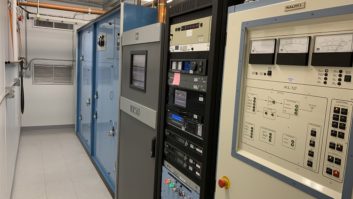Let your light shine
Oct 1, 2001 12:00 PM, By Skip Pizzi
The events of recent days have brought much attention to the broadcast media, as is often the case in periods of crisis. It is times like these when the true value of broadcasting shows through, and the routine, day-to-day priorities of the business fade in importance. The nation huddles to stay informed via news broadcasts, or to discuss issues on talk radio, and eventually to escape and return to normal with sports and entertainment programs.
Like most of American enterprise, our industry is at its best in a crisis, and new ideas are spawned as broadcasters struggle to find more ways to provide service. But unlike many U.S. businesses, broadcasters are not suffering downturns in usage at present, nor do they have to dramatically alter their offerings to remain viable in a changed world. Consumers simply want more of the same from broadcast services. For radio in particular, therefore, this is a timely moment to explore extension of services that might properly fulfill the current imperative.
More ways to help
Online services are the most obvious venue for these extensions today, allowing broadcasters to provide audio and non-audio (i.e., text, photos and graphics) plus two-way communication and personalization to the wired PC environment. Wireless data is waiting in the wings as the next act, providing an opportunity to feed lighter-weight versions of such enhancements to portable devices. DAB may offer similar opportunities in upcoming years, and it is likely that other technologies not yet identified will continue the trend in the long term.
Perhaps best of all, such growth comes without any corresponding losses to the medium’s core service and competency: over-the-air broadcast audio. This means that development of skills, services and revenues in the new areas can occur incrementally and grow at a natural and pragmatic pace, without undue risk or speculation. It also allows broadcasters to identify the unique values of many services and maximize their respective potentials. Broadcast and online services are complementary in this respect, as recent events have underscored. For example, when many listeners want to hear the same thing, broadcasting fills the need perfectly. When the opposite is true (i.e., listeners each want something different), online service excels.
The key to cultivating new services is properly multipurposing content and extending the broadcast channel’s established branding. Broadcasters have already had some experience with multipurposing in the consolidation process, where facilities, talent and, in some cases, content have been shared among colocated operations for multiple broadcast services. The difference between that process and the broadcast/online variant involves the divergent service profiles between broadcast and online media, so the content offered on each must be optimized in distinct ways. Radio professionals across the industry are learning and developing this expertise today, and audiences’ current needs can help refine this process.
Optimizing design
I once attended the dedication ceremony for a newly constructed house of worship and heard an apropos story from one of the clergy who spoke at the event. He recalled a similar opening event at another new facility, which its congregants had anticipated greatly as they watched the building’s construction progress over many months. They had marveled particularly at the huge and beautiful windows featured in the edifice’s design, but all were shocked and dismayed when they at last entered the completed structure and saw how small the windows’ surfaces appeared from the building’s interior. �How can the windows be so big and beautiful on the outside, and yet so tiny on the inside? Why are they designed like that? They hardly let in any light at all,� the congregants complained. Their prelate answered, �You misunderstand the purpose of these windows. They are not intended to let in light, but rather to allow the light generated within these walls to be better shed upon the community outside.�
Broadcasters should design their services accordingly � and not just with a single �window� to their communities, but multiple ones. In this way they will maximize the beneficial service they provide to the public, and reap corresponding rewards.












